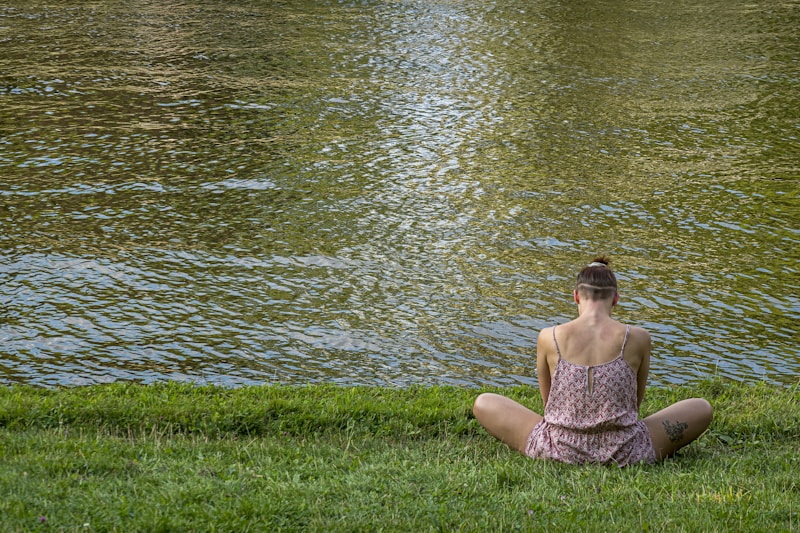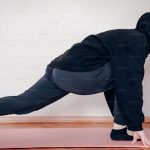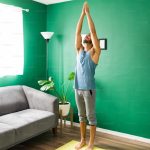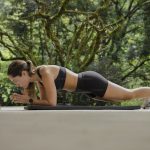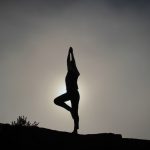Vinyasa means ‘to place in a special way’. It is often used to describe a specific style of yoga ie Vinyasa Flow. But it seems to me that we move in a ‘special way’ in all styles of yoga. We move our limbs in a particular direction; we tense some muscles but relax others, and we link movement and breath. Though all of this has roots in traditional teaching, there is usually good anatomical reasoning behind it too. Let me explain some of the anatomy behind a few of the strange things your yoga teacher tells you to do.
Find your kneecaps…
This one is about a wonderful thing called Reciprocal Inhibition. Muscles work in pairs. In these pairs, when one muscle contracts, the opposite muscle must relax. It can’t help it – that is Reciprocal Inhibition.
One time we all use this principle of Reciprocal Inhibition on the mat is in forward folds. When your teacher guides your attention to your kneecaps and drawing them up your leg, it is your quads muscle on the front of the thigh that kicks into action to make it happen. As the quads engage, your hamstrings start to relax and lengthen, allowing you to move further into the fold. Clever, eh?
We can use the same principle in lunges to release hip flexors. Engage the glutes on the back leg and the psoas will have to release. Just be sure to have your lower ribs drawn down at the same time so that the release of psoas doesn’t just arch your back
Balance, balance in all things
So much of yoga is about balance, both on and off the mat. Most poses involve an element of physical balance, obviously, hand balances and standing balances need the most stability. But what is really happening as we balance?
Every second of the day, our joints are sending information to our brain to inform it of what position we are in. The brain interprets this information and sends messages back to our muscles with instructions to tense or relax which keeps our joints safe and us upright. This process is called proprioception; it happens in a fraction of a second. And it never stops. Our body is constantly communicating with our brain in this way.
So, next time you are balancing and you feel your ankle adjusting a little this way and that – that is proprioception in action. As we practice balances, not only do we get stronger but our proprioception loop gets more efficient and we wobble less and less. Magic!
Engage your abs to twist
Ever wondered why we do this? Well, by engaging some particular abdominal muscles you can make twists more effective AND safer. And those muscles are your Internal and External Obliques. They run from the lower ribs on one side; link across the middle, and continue to the pelvis on the other side. Contracting them pulls the ribs from one side towards the pelvis on the other and – hey presto! – you twist.
In a pose like ardha matsyendrāsana (half Lord of the Fishes), your elbow levers against your knee…it is SO tempting to use that to lever into a greater twist. While this may feel good for your ego, it has real potential to place unnecessary stress on the joints of the pelvis. In contrast, using your Obliques to twist supports and protects those same joints. Much safer.
The truth behind belly breathing
Diaphragmatic or belly breathing is a wonderful tool in a yogi’s repertoire to directly stimulate the parasympathetic side (calming) of the nervous system. This is wonderfully good for the body as it does things like lower blood pressure; reduce heart rate; reduce muscular tension; and improve blood flow to the gut. But are we really breathing into our belly? No – that is just a yoga myth. This is what is really happening:
Our diaphragm is a tough muscular sheet that separates our chest cavity from our abdominal contents. It attaches around the bottom of the ribcage and spine with the muscle fibres running inwards, like spokes on a wheel, to a central tendon. There are a few holes in the diaphragm to let blood vessels through, but the seal around these is so good that there is actually a vacuum in the chest cavity above. The lungs sit in this vacuum.
During belly breathing, we contract the diaphragm muscle and the central tendon is pulled down from its relaxed position. This squashes the abdominal contents and pulls air into the lungs. Compression of the abdominal contents is what causes the upper belly to bulge and swell forwards. When we breathe out, the diaphragm relaxes, goes back to its resting position with the central tendon sitting up in the chest and the belly sinks back.
As a yoga teacher, it is tempting to tell students to ‘breathe into the belly’ as this image seems to help people get the right action of the diaphragm. But it is not the breath that we feel moving in and out of our belly but the movement of our abdominal organs as the diaphragm compresses and releases them.
To curve or not to curve the spine
We are often instructed to lengthen our spines in yoga. And with this lengthening comes a flattening of the normal spinal curves. Is this a good thing? Maybe, maybe not …let’s explore.
The human spine is designed to be most efficient when it has a series of small curves in it (as viewed from the side). Ideally there will be a forward curve in the lower back, a backward curve in the middle and upper back and another forward curve in the neck. This arrangement of the spinal vertebrae is efficient and needs minimal muscle action to maintain. Unfortunately many people have a less than optimal arrangement of these curves with areas of exaggerated curve at one or more level of their spine. In this case, cues to encourage movement towards a more ideal arrangement of curves is one of the ways that yoga can improve a students posture.
However, there may come a time when the best arrangement of curves has been achieved and striving to flatten the curves further can cause problems. Too much ‘tucking the tailbone under’ will cause the forward curve in the lower back to turn into a backward one which is not ideal. Rather than tucking the tailbone under at this stage, aspiring to draw it towards the ground between the feet is more anatomically correct and safer.
Similarly, forward folds will require an element of flexion (bend) in the lower spine. Ideally, one-third of the fold comes from this area of the spine and two thirds from the hips. The middle and upper back is where the spine needs to be straightening rather than curling. Aiming the belly towards the thighs and the chest towards to toes helps to encourage the right spinal actions here.
And finally…
Yoga is amazing and has the power to transform the body. It has been practiced for millennia and developed at a time before an in-depth understanding of anatomy. But as yoga continues to evolve, an understanding of anatomy is so powerful in underpinning practice. Yoga teachers are taught anatomy as part of their teacher training. Some styles of yoga have anatomy as one of their foundations. And if you haven’t yet discovered the wonderful world of anatomy – I thoroughly recommend it. There are books to read, courses you can attend and your own body to learn from. Enjoy the journey!

